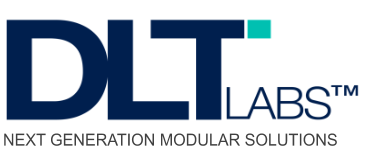
Requirement elicitation is the process of collecting information from stakeholders. It serves as a foundation in documenting the requirements for application development.
There are a number of elicitation techniques to gather requirements or to collect the information from the stakeholders. Some of the requirement elicitation techniques are as follows.
- Document analysis
- Observation
- Interview
- Prototyping
- Brainstorming
- Workshop
- JAD (Joint Application Development)
- Reverse engineering
- Surveys/Questionnaire
Document analysis
Document analysis is one of the most helpful elicitation techniques in understanding the current process. Documents like user manuals, software vendor manuals, process documents about the current system can provide the inputs for the new system requirements.
Steps involved in document analysis are:
- Evaluating whether the existing system and business documents are appropriate to be studied.
- Analysing the documents to identify relevant business details.
- Reviewing and confirming identified details with subject matter experts.
There could be a lot of information that can be transferred to a new system requirements document. Evaluating the documentation can assist in making the As-Is process document, and conducting GAP analysis for scoping of the project in question.
Observation
This elicitation technique helps in collecting requirements by observing users or stakeholders. This can provide information about the exiting process, inputs and outputs. There are two kinds of observations ? active and passive.
In active observation, the business analyst directly observes the users or stakeholders, whereas in passive observation the business analyst observes the subject matter experts.
This helps the business team understand the requirements when users are unable to explain requirements clearly.
Interview
An interview is a systematic approach to elicit information from a person or group of people. In this case, the business analyst acts as an interviewer. An interview provides an opportunity to explore and/or clarify requirements in more detail. Without knowing the expectations and goals of the stakeholders it is difficult to fulfil requirements.
Prototyping
Screen mockups can support the requirement gathering process, when introduced at the correct time. Mockups help stakeholders visualize the functionality of a system. This can be an advantage to business analysts and stakeholders since this allows them to identify gaps/problems early on.
Brainstorming
Brainstorming is an efficient way to define their requirements. Users can come up with very innovative ideas or requirements. This can help gather ideas and creative solutions from stakeholders in a short time. Users or stakeholders can come up with ideas that they have seen or experienced elsewhere. These ideas can be reviewed and the relevant ones can then be included in the system requirements.
Workshop
Workshops comprise a group of users or stakeholders working together to identify requirements. A requirement workshop is a structured way to capture requirements. Workshops are used to scope, discover, define, and prioritize requirements for the proposed system.
They are the most effective way to deliver high-quality requirements quickly. They promote mutual understanding and strong communication between users or stakeholders and the project team.
JAD (Joint Application Development)
Joint Application Development (JAD) technique is an extended session to the workshop. In the JAD session stakeholders and project team works together to identify the requirements. These sessions allow the business team to gather and consolidate large amounts of information. Identification of stakeholders is the critical to the overall success of the JAD session. The JAD team includes business process owners, client representatives, ssers or stakeholders, business analysts, project managers, IT experts (developers, quality assurance, designers, and security).
Reverse engineering
This elicitation technique is generally used in migration projects. If an existing system has outdated documentation, it can be reverse engineered to understand what the system does. This is an elicitation technique that can extract implemented requirements from the system. There are two types of reverse engineering techniques. Black box reverse engineering: The system is studied without examining its internal structure (function and composition of software). White box reverse engineering: The inner workings of the system are studied (analysing and understanding of software code).
Surveys/Questionnaires
Questionnaires are useful when there is a lot of information to be gathered from a larger group of stakeholders. This enables the business team to gather requirements from stakeholders remotely. The design of the questionnaire is very important, since it can influence the answers that people provide.
In addition to the above-mentioned elicitation techniques, there are many more are on the market. It is very difficult to say that which elicitation technique is suitable for all projects. Not all elicitation techniques can be executed for every project.
When selecting an elicitation method, factors such as the nature of the project, organizational structure and type of stakeholders are taken into account by the business team before deciding which technique works best. Having said that, brainstorming, document analysis, interviews, prototyping and workshops are the most widely used requirement elicitation techniques.
Requirement modeling is an important part of business analysis that takes place once all the requirements are elicited. We discuss that in our post here:
Requirement Modeling for Business Analysis
We explore Use Case Diagrams for effective requirement modelling?
DLT Lab medium.com
Author ? Sreekanth Mallela, DLT Labs?
About the Author: Sreekanth joined DLT Labs in the business analysis team. He transitioned to a subject matter expert and IT business analyst from an agriculture molecular biologist and has worked on the implementation of various experimental tracking and documentation platforms.



